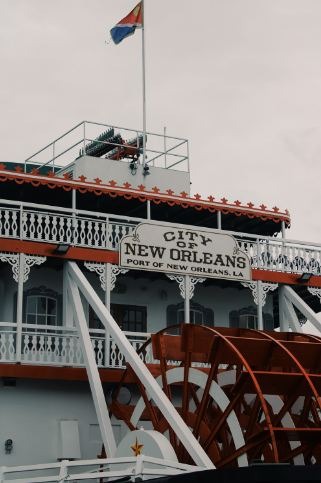During the early centuries, people were not accessible to traveled and transported goods easily. They need transportation that eases their burdens passing through rivers. Since rivers were used for transportation before trains, vehicles, trucks, and airplanes were invented. They were responsible for transporting people and products from one location to another. Because the movement speed was dependent on the river current and manpower, river navigation was typically slow.
This article will let you know the invention that helps people transport things and the interesting facts about steam-powered ships. Let’s go back to when this marvelous invention was created that has been useful even today.
Steamboat
A steamboat is a vessel primarily driven by steam, which is used to operate propellers or paddlewheels. Steam-powered boats that operate on lakes and rivers, famous riverboats. Steam power was used to more significant, ocean-going vessels as the technology grew more dependable.
Steamboats would be propelled by an engine that burnt coal to transform water into steam. A propellor or paddlewheel is also used to power it. Some boats had only one paddlewheel, while others had two. In 1769, James Watt created the steam engine. This inventor’s name was given to the unit of measurement for power (watt). His steam engines were smaller in size and required less coal to power the ship. When steamboat designs became famous, his steam engines were in high demand.
The Early Steamboats
John Fitch, James Rumsey, and John Stevens are some of the most well-known names in the steamboat business. These guys were among the first to construct a scientifically practical steamboat. While these individuals were successful, Robert Fulton is credited with making the first commercially viable Steamboat by combining a steam engine and hull design. He had previously successfully built and operated a submarine in France.
In 1807, Robert Fulton invented the North River Steamboat (also known as the Clermont), a huge success. It encouraged further exploration and colonization by enabling two-way river navigation. The Steamboat would take thirty-two hours to go from New York City to Albany, but typical sailing ships and other vessels would take nearly four days. The total distance traveled was around one hundred fifty miles, and the boat could carry up to one hundred passengers every trip. The ship was incredibly loud, and many people dubbed it “Fulton’s Folly,” believing that it would ultimately explode. a few years later, in 1811, were Robert Livingston and Robert Fulton designed the “New Orleans.” The New Orleans tradition
The Evolution of the Steamboat
The steamboat business quickly spread from New York City to the rest of America. The industry was highly influential in delivering products and people faster than ever before in the 1850s. Travelers were aware of their hazards as their popularity and success grew. The boats’ navigation might be challenging, resulting in disasters such as log jams and shifting channels for the commanders. Sailing downstream was reasonably easy for the ships, while traveling upstream was a little more challenging. Because of faulty design, there were even numerous deaths caused by boiler explosions on steamboats. The ships may potentially become the subject of several Native American attacks.
The Steamboat played a vital role in Westward Expansion. However, by the 1870s, the development of steam-powered railroads had swiftly displaced the boat. Transporting products and passengers grew more efficient and quicker, relegating the Steamboat to a secondary option. Steamboats are still utilized in the United States today, although only as a minor mode of transportation due to technological advancements over time.
The Demise of the Steamboat
Steamboats dominated trade and travel throughout the 1800s and early 1900s, but they were gradually supplanted by other modes of transportation. Railroads began to compete with steamboats as early as the 1830s. There were just twenty-three miles of track in the entire United States when this small number of channels did not provide much competition, but by 1880, there were around ninety-three thousand miles of way, and trains were displacing steamboats. With the development of automobiles, trucks, and aircraft in the twentieth century, steamboats became outdated, and most were abandoned. Steamboats no longer sail the nation’s rivers, yet they will always be one of the most popular modes of transportation.

